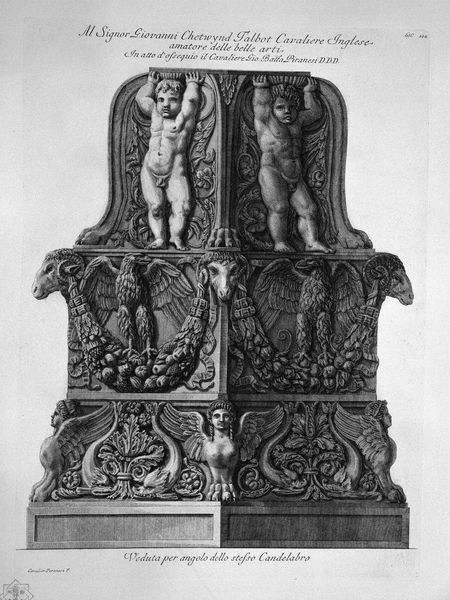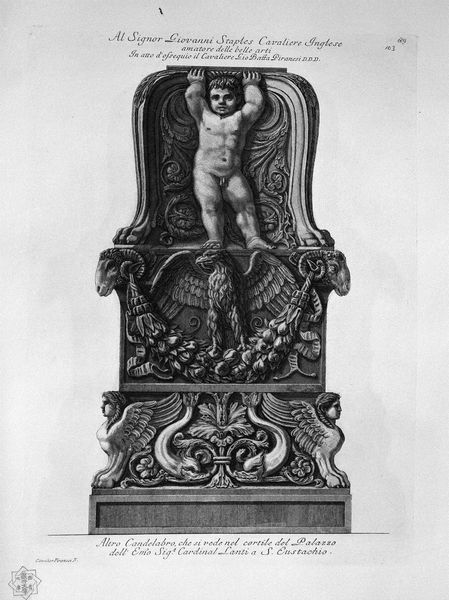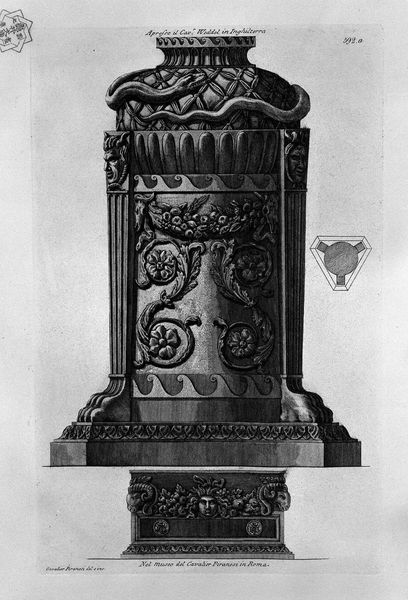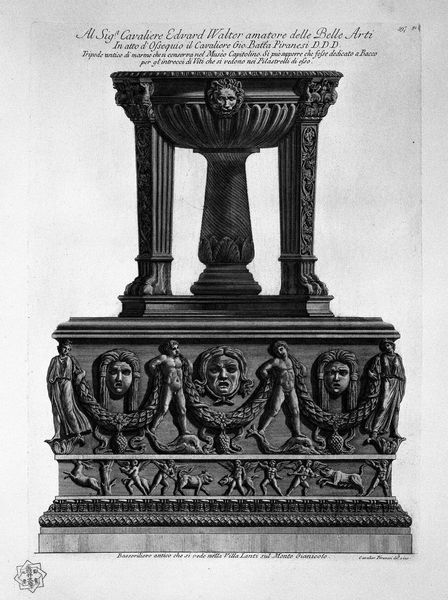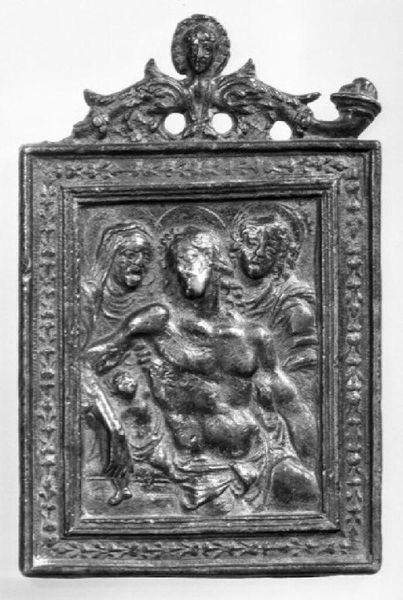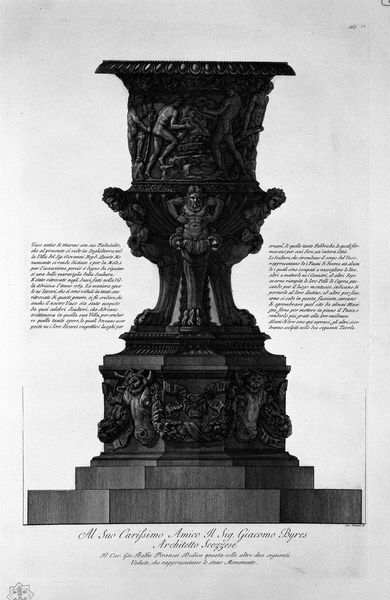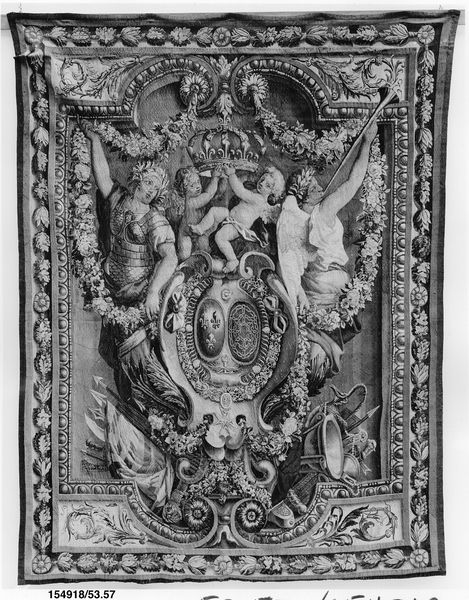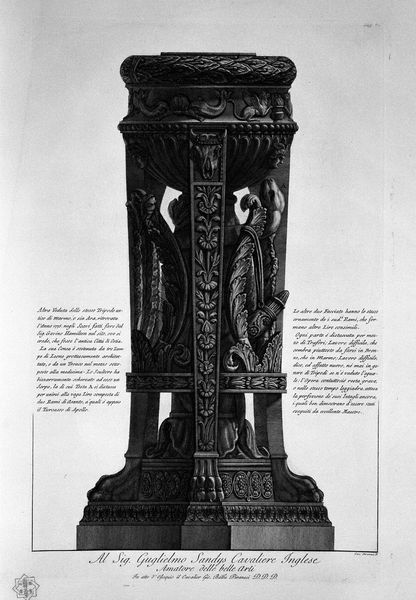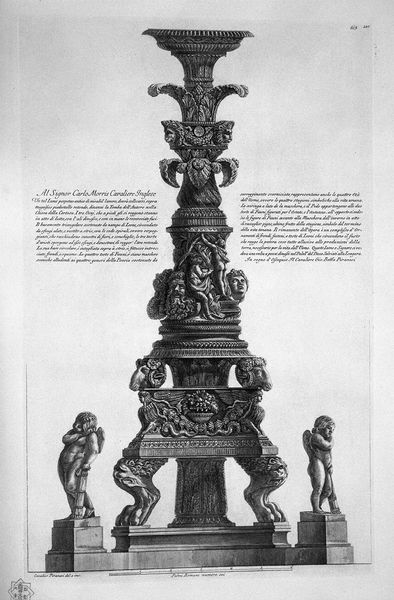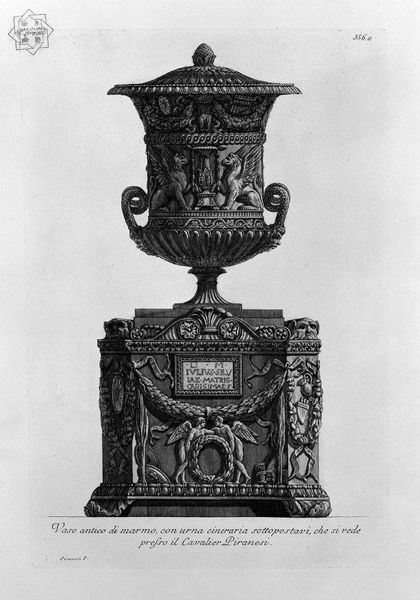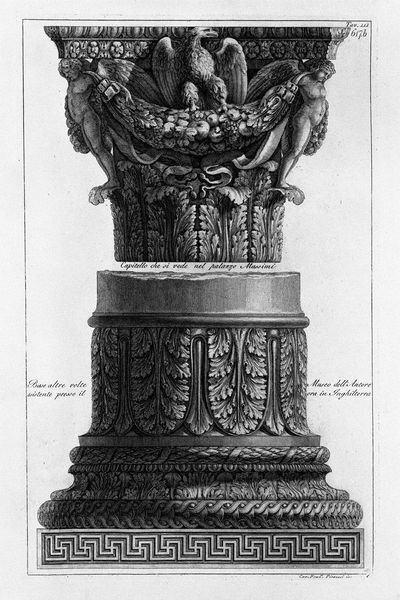
print, metal, engraving, architecture
#
baroque
# print
#
metal
#
engraving
#
architecture
Copyright: Public domain
Editor: So, we're looking at Giovanni Battista Piranesi's engraving of a candlestick in the Palazzo Lante. I’m struck by the elaborate details – the figures, the ornamentation… it's almost overwhelming. How do you interpret this work? Curator: It's critical to see Piranesi in the context of 18th-century Rome, a city obsessed with its classical past. This candlestick, rendered meticulously through engraving, reflects the powerful influence of antiquity on contemporary design and aristocratic taste. Notice how Piranesi presents this object; he isn't just documenting it, he's elevating it. Editor: Elevating it how? Is it the scale of the depiction? Curator: Exactly. By isolating this ornate object, Piranesi highlights its connection to ancient grandeur, visually linking his patrons to the power of the Roman Empire. The dedication to Giovanni Rous, an Englishman, reveals the role of the Grand Tour and the British elite's fascination with Italian antiquities. Editor: That makes sense. It's not just a candlestick, it’s a statement piece, a symbol of status displayed to impress visitors. Curator: Precisely. Consider also the visual language; the theatricality of the Baroque mixed with ancient motifs, the monumentality... these choices aren't arbitrary. Piranesi crafts a narrative of cultural legitimacy for his audience, reinforcing existing social hierarchies. This print served as a tangible connection to an illustrious past. Editor: So the print itself, distributed among collectors and patrons, further propagated this image of aristocratic power? Curator: Absolutely. It's about curating a historical narrative, where ownership of antiquities or, even representations of them, bestows cultural capital. Editor: That's fascinating. I always thought of engravings like this as documentation, but it’s so much more. Curator: These engravings shaped perceptions of value and legitimized certain forms of collecting and display. Consider how institutions then, and now, actively participate in forming what constitutes art, architecture, and history itself.
Comments
No comments
Be the first to comment and join the conversation on the ultimate creative platform.
